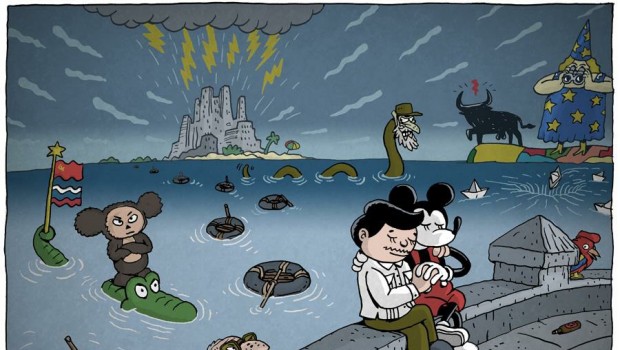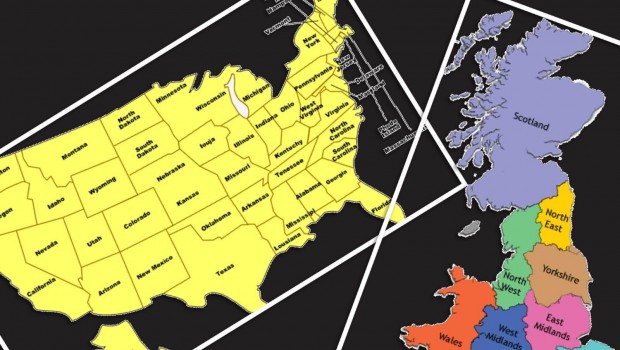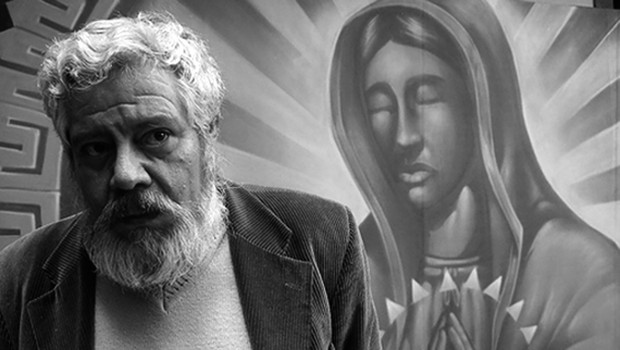2012: The Emperor of All Calamities
2012: El emperador de todos los cataclismos
Stephen Houston
In commenting on the French Revolution, Alexis de Tocqueville noted, “[n]ever was any such event so inevitable yet so completely unforeseen.” By contrast, the prophecy, dread, even hope, that attend the “2012” phenomenon lack, by scientific consent, any basis at all. So far, this date, December 21 or 23, 2012, depending on the correlation between Maya and European calendars, has inspired many dozens of books, a loud CG-drenched movie, rather pricey tours with “wisdom keepers,” and, for a moment, a rare opening in which scholars might just be heard beyond the academy. The teachable moment will pass at midnight on the appointed day.
We have been through this before. William Miller, calculating numerical clues from the Bible, professed supreme certainty about the Second Coming of Christ in 1843. Notably, he was wrong. The Heaven’s Gate cult was just as sure that a spaceship would let them hitch a ride behind the Hale-Bopp comet, then departing our solar system. Other such fizzles include the Y2K prediction and the fervent declarations of Harold Camping, a Family Radio broadcaster who committed, bravely, to May 21, 2011 as the End of Days. (Poor fellow, his personal fate seemed to have been a stroke, suffered on June 10, 2011.) Then there are imaginative works that yearn for events not yet come to pass. The most prominent are the “Left Behind” novels that ache for the Rapture. A more amusing offering, working both as entertainment and existential treatise, is Tom Perrotta’s The Leftovers, now a certified New York Times bestseller. Mischievous through and through, it reveals the Rapture to be nearly random. As always, humans careen through events they neither control nor understand.
Adam Gopnik, in The New Yorker, houses much of such desperation in what he calls “declinism,” a disposition holding that things are going downhill and, if we thought about it, were usually much better before. Like Humpty Dumpty, society and its moral underpinnings will soon shatter, not to be reassembled by art or will. What political discourse in the United States fails to proclaim this truth? If Gopnik scratched more deeply, he would uncover similar sentiments at the beginning of Greek civilization, in Hesiod’s Works and Days: “the tribes of men lived on earth remote and free from ills and hard toil and heavy sickness…[today] countless plagues wander amongst men; for earth is full of evils and the sea is full…bringing mischief to mortals.” But human nature being what it is, a commensurate desire exists to sort out which particular torment awaits us and why.
There are secular and occult modes of answering this need to know. The secular evaluates current calamities, vectors in probable courses of deterioration, weighs the likely human response, usually found to be wanting, and ends up with Malthusian tracts like The Population Bomb by Paul and Anne Ehrlich or an equally shocking documentary by the winner of the popular vote in the 1980 US presidential election. The overriding theme is human folly, but with still-extant hope for future redemption. The occult mode is entirely different. The authorities are not scientists or demographers but divinities and the prophets who speak to them. Knowledge descends to our benefit from signs and revelations, and, in the Maya case, from a supposed source of ancient, mystical, non-western knowledge. The evidence inheres in the authority of the source, not whether it submits to any independent or empirical verification. Occult wisdom is self-referential. It is wise and valid because it is wise and valid because it is… The necessary step is to bow to that authority, by an act of faith. All else follows. The trust that knowledge of the future will come from the deep past, be it the Book of Revelations or Maya glyphic writing, enhances its mysterious, transcendent authenticity. Yet, by plain fact, most people do not believe in fortune-telling. By certain theologies, it might even be a sin, as it credits godly powers to human beings. The allure of the occult is that what lies beyond human ability becomes eminently possible by the operation and perception of sacred and mystical forces.
So to 2012. The claim, found in books aplenty on Amazon.com– many are self-published or issued by New Age presses–is that the Maya calendar will come to an end on December 21, 2012. Very bad events will happen. Or, in one variant, bad things will occur but will segue into very good events that renovate and improve our species. Yet another version mixes secular and occult knowledge by acknowledging Maya predictions along with the probability of solar flares, colliding planets, alignments with black holes, and so on.
This is not the place to review what has been said or proposed. There are superb books on the subject by specialists like Anthony Aveni of Colgate University (The End of Time: The Maya Mystery of 2012) or David Stuart of the University of Texas at Austin (The Order of Days: The Maya World and the Truth about 2012). The latter is particularly eloquent in describing the cyclic basis of Maya time as an embodied, living presence. Maya time did not just mark the passage of days. Rather, in ordered fashion, time existed, by units that would be unfamiliar to all but present-day mathematicians. It displayed destinies and personalities, faces and bodies. The days themselves presided as lordly, enthroned entities. Vital and agentive, they were even activated by the blood of primordial sacrifi ce. The role of human was to observe their course, celebrate their passage with concrete memorials like stelae and altars, and, at times, either as covert manipulation or revealed truth, play with time and correlate it with the needs of real, human ambition among sacred kings a thousand or more years ago.
As Stuart points out, there are many confusions among those who dread or welcome the year 2012. Much depends, for example, on the preferred correlation. If we accept a certain tether to the European calendar, December 21 looms large, with all the druidical associations of the winter solstice; if another, then December 23. A few scholars doubt any of the current correlations, but they are in the minority. More telling is whether the ancient Maya ever spoke of cataclysmic endings in their script. Stuart finds the basic problem, a careless, modern blurring of Maya evidence with much later Aztec belief, which does accept ages of world destruction and creation. To be sure, there is a literature of lamentation among the Colonial Maya, couched in terms of cyclic calendars and ill-fortuned destiny. Yet the Colonial Maya were not, because of Spanish abuse, in a very cheerful mood. The imperial heel was heavy, the course of introduced disease calamitous, and the insistent preaching of friars, intent on questioning indigenous belief, made for challenging adjustments. “Declinism” affected the Maya long before it infected our own world, but, possibly, in such severe form, at a relatively late date.
Here are the facts. There is a depiction of cataclysm in the Precolumbian period, on a page in one of the exceedingly rare Maya books, the Dresden Codex. A goddess pours water from a jar. She is linked to creation, midwifery, healing, but also, as with such crones in other traditions, to the ending of life on the deathbed. Above the goddess in the Dresden is a more copious flow of water, vomiting from the mouth of a sky-crocodile. Below, a god associated with trade adopts another persona, as a warrior. The background is unique to the Dresden codex because of its dark red hue, hinting at darkness, gloom, danger. The glyphs above are obscure and poorly preserved, but there is mention of “black sky” and “black earth.” When will this occur? The Maya do not tell us. There are also, throughout this book, descriptions of dread episodes: droughts, bad augury, but good ones too. Certain days or conjunctures of cycles had particular resonances, and might thus guide future behavior on those days. Yet, in all the rich inventory of Maya texts, scholars find no perceptible evidence of prophecy, for all the testimony to such prophecy in the Colonial period and beyond.
True, a composite cycle of the Maya, counted from an enigmatic event millennia past, will come to an end. Depending on correlation, this will happen in AD 2012. The best understanding of the inception of the cycle is that it involves the mounding or replacement of a threestone hearth, much like that used in Maya cooking today. In other glyphic accounts and scenes, gods will gather and “be ordered.” Unlike Aztec creations, which trigger the predations of fierce jaguars or drownings by water, these primal events do not stir much fear as a template for the future. Stuart notes that the composite cycle was one of many, that, in Maya texts, other future cycles awaited humans. To seize on a single cycle is to miss utterly the grandeur of Maya notions of time. The lone, purported example of Maya prophecy, on a monument from the Classic city of Tortuguero, Tabasco, is wrongly interpreted. The baroque structure of the inscription confirms that the “prophecy” relates instead to a time in the Classic period, in the first millennium AD. The event in question pertains to the erection of the text in, of all places, a symbolic sweatbath.
One secure prediction: 2012 will not witness the emperor of all calamities, at least to judge from Maya evidence.
Traducción al español de Eugenia Noriega
Al comentar sobre la Revolución Francesa, Alexis de Tocqueville dijo “jamás un evento así fue tan inevitable y a la vez tan completamente imprevisto”. En contraste, la profecía, el pavor, incluso la esperanza que concurren alrededor del fenómeno “2012”, por consenso científico, carecen de base alguna. Hasta ahora esta fecha, el 21 o 23 de diciembre de 2012, dependiendo de la correlación entre el calendario maya y el europeo, ha inspirado varias docenas de libros, una película estrepitosa y saturada de gráficos computarizados, tours algo costosos con “guardianes de la sabiduría” y, por el momento, una rara oportunidad para que los académicos puedan hacerse escuchar más allá de la academia. El momento para el aprendizaje terminará a la medianoche del día señalado.
Ya hemos pasado por esto antes. William Miller, basado en cálculos numéricos según pistas encontradas en la Biblia, profetizó con certeza absoluta la Segunda Venida de Cristo en 1843. Evidentemente, se equivocó. Los integrantes de la secta Heaven’s Gate (Puerta del Cielo) estaban igualmente seguros de que una nave espacial detrás del cometa Hale-Bopp los llevaría más allá de nuestro sistema solar. Otros fiascos por el estilo incluyen la predicción Y2K y las fervientes declaraciones de Harold Camping, un locutor de la Radio Familiar, que aseveró valientemente que el 21 de mayo de 2011 sería el Fin de los Días. (Pobre tipo, su destino personal parece haber sido un infarto cerebral, sufrido el 10 de junio de 2011). Y están también las obras imaginativas que anhelan eventos que aún no han tenido lugar. Las más prominentes son las novelas Left Behind, que se deshacen por que llegue el Rapto. Una oferta mucho más divertida, que funciona como entretenimiento y a la vez como tratado existencial, es The Leftovers, de Tom Perrota, ahora un best-seller acreditado por el New York Times. Una travesura de principio a fin que revela el Rapto como algo casi azaroso. Como siempre, los humanos se van tambaleando a través de eventos que no pueden controlar ni entender.
Adam Gopnik, en The New Yorker, alberga mucha de esta desesperación en lo que llama “declinismo”, una disposición que sostiene que las cosas van cuesta abajo y, si lo pensamos, estaban mucho mejor antes. Como Humpty Dumpty, la sociedad y todo lo que la sustenta pronto se van a hacer añicos, y no se podrán reconstruir por mero arte o voluntad. ¿Qué discurso político en los Estados Unidos no proclama esta verdad? Si Gopnik rascara un poco más, encontraría sentimientos similares en los comienzos de la civilización griega, en la obra de Hesiodo, Los trabajos y los días: “vivía en la tierra el género humano, lejos y libre de males, libre de la dura fatiga y de enfermedades dolorosas… [hoy] son incontables las penas que vagan entre los hombres: pues llena está la tierra de males, llena la mar… llevando el dolor a los mortales”. Pero siendo la naturaleza humana lo que es, existe un deseo conmensurable de esclarecer qué tormento particular nos espera y por qué.
Hay formas seculares y ocultas de responder a esta necesidad de saber. Las seculares evalúan las calamidades actuales, vectores en los cursos probables de deterioro, ponderan la respuesta humana más plausible, que suele encontrarse defi ciente, y suelen terminar con tratados maltusianos como The Population Bomb, de Paul y Anne Ehrlich, o un documental igualmente impactante realizado por el ganador del voto popular en la elección presidencial de los Estados Unidos en 1980. El tema central es la necedad humana, pero con la esperanza todavía viva, de redención futura. El modo oculto es completamente distinto. Las autoridades no son científi cos o demógrafos, sino las divinidades y los profetas que hablan con ellas. El conocimiento desciende, para beneficio nuestro, de signos y revelaciones y, en el caso de los mayas, de una supuesta fuente de sabiduría ancestral, mística, no occidental. La evidencia es inherente a la autoridad de la fuente y no depende de una verificación independiente o empírica. La sabiduría oculta es autoreferencial. Es acertada y válida puesto que es acertada y válida puesto que es… El paso necesario es inclinarse ante esa autoridad por un acto de fe. Todo lo demás viene después. La confianza en que el conocimiento del futuro vendrá del pasado profundo, sea en el Libro de las Revelaciones o en los glifos mayas, resalta su autenticidad misteriosa y trascendental. Sin embargo, por mera cuestión de hechos, la mayoría de las personas no creen en la adivinación. De acuerdo con ciertas teologías puede incluso ser un pecado, ya que le otorga poderes divinos a los seres humanos. La atracción de lo oculto es que lo que está más allá de la capacidad humana se vuelve sumamente posible a través de la operación y la percepción de fuerzas místicas y sagradas.
Entonces, sobre el 2012. Lo que se dice, y se puede encontrar en muchos libros en Amazon.com –muchos son auto-publicados o emitidos por editoriales del New Age– es que el calendario maya llega a su fin el 21 de diciembre de 2012. Van a pasar cosas muy malas. O, en una variante, van a pasar cosas malas pero seguidas de cosas muy buenas que van a renovar y mejorar nuestra especie. Otra versión más mezcla el conocimiento secular y oculto, reconociendo las predicciones de los mayas sumadas a la probabilidad de erupciones solares, colisiones planetarias, alineaciones con hoyos negros, y otras cosas por el estilo.
Éste no es el momento de revisar lo que se ha dicho o propuesto. Existen libros excelentes sobre el tema, escritos por especialistas como Anthoni Aveni, de la Universidad Colgate (The End of Time: The Maya Mystery of 2012), o David Stuart de la Universidad de Texas en Austin (The Order of Days: The Maya World and the Truth about 2012). Este último es particularmente elocuente en la descripción de la base cíclica del tiempo maya como una presencia encarnada, viva. El tiempo maya no sólo marcaba el paso de los días. En lugar de esto, el tiempo existía, de un modo ordenado, en unidades desconocidas para todos, excepto para matemáticos contemporáneos. Desplegaba destinos y personalidades, caras y cuerpos. Los días mismos presidían como entidades señoriales, reales. Vitales y dinámicos, incluso se activaban mediante la sangre del sacrificio primordial. El rol del humano era observar su curso, celebrar su paso con monumentos concretos como estelas y altares y, a veces, ya fuera como una manipulación encubierta o una verdad revelada, jugar con el tiempo y correlacionarlo con las necesidades de la ambición humana real entre los reyes sagrados, hace mil años o más.
Como señala Stuart, existe mucha confusión entre aquéllos que temen o esperan el año 2012. Mucho depende, por ejemplo, de la correlación preferida. Si aceptamos cierta sujeción al calendario europeo, el 21 de diciembre se acerca amenazante, junto con todas las asociaciones druídicas del solsticio de invierno; si es otra, entonces es el 23 de diciembre. Algunos académicos dudan sobre cualquiera de las correlaciones actuales, pero son una minoría. Lo que es más contundente es si los mayas antiguos alguna vez hablaron de finales catastróficos en sus textos. Para Stuart el problema esencial es una confusión moderna, descuidada, de la evidencia maya con creencias aztecas, muy posteriores, que sí aceptan eras de destrucción y creación del mundo. Desde luego que existe una literatura de lamento entre los mayas coloniales, expresada en términos de calendarios cíclicos y destino aciago. Pero los mayas coloniales, maltratados por los españoles, no estaban precisamente rebosantes de alegría. El peso imperial era aplastante; el curso de nuevas enfermedades, calamitoso; y los sermones insistentes de los frailes, resueltos a cuestionar las creencias indígenas, exigían arduos ajustes. El “declinismo” afectó a los mayas mucho antes de que infectara nuestro propio mundo, pero, con tal severidad, es posible que haya sido en una época relativamente tardía.
Estos son los hechos. Sí existe una descripción de cataclismo en el periodo precolombino, en una página en uno de los rarísimos libros mayas, el Código de Dresde. Una diosa vierte agua de una vasija. Está relacionada con la creación, la partería, la sanación, pero también, como tantas viejas brujas en otras tradiciones, con el final de la vida en el lecho de muerte. Por encima de la diosa, en el Dresde, aparece un flujo de agua más copioso, vómito que emana de las fauces de un cocodrilo-cielo. Debajo, un dios asociado con el comercio asume otra personalidad, como guerrero. El fondo es único en el código de Dresde debido a su tono rojo oscuro que habla de penumbra, abatimiento, peligro. Los glifos en la parte superior son confusos y no están bien preservados, pero hacen mención de un “cielo negro” y una “tierra negra”. ¿Cuándo va a ocurrir esto? Los mayas no lo dicen. A lo largo del libro también encontramos descripciones de episodios de horror: sequías, malos presagios pero también buenos augurios. Ciertos días o coyunturas de ciclos tenían resonancias particulares, y así podrían guiar el comportamiento futuro en esos días. Sin embargo, en el rico inventario de textos mayas, los académicos no encuentran evidencia perceptible de una profecía, para todo el testimonio de dicha profecía en el periodo colonial y posterior.
Es cierto que un ciclo compuesto de los mayas, contado a partir de un evento enigmático hace varios milenios, va a llegar a su fin. Dependiendo de la correlación, esto va a pasar en el 2012 d.C. La mejor manera de entender el origen del ciclo es que implica la construcción o el reemplazo de un hogar de tres piedras, muy parecido al que se utiliza en la cocina maya hoy en día. En otros relatos y escenas, los dioses se van a reunir y a “ordenar”. A diferencia de las creaciones aztecas, que detonan el asedio de feroces jaguares o ahogamientos en agua, estos eventos primordiales son más una plantilla para el futuro que causa pavor. Stuart nos hace notar que el ciclo compuesto fue uno entre muchos ya que, según textos mayas, a la humanidad le esperan otros ciclos futuros. Fijarse en un solo ciclo es dejar de lado por completo la grandeza de las nociones mayas del tiempo. El ejemplo propuesto, solitario, de la profecía maya, en un monumento de la ciudad clásica de Tortuguero, Tabasco, ha sido mal interpretado. La estructura barroca de la inscripción confirma que la “profecía” está relacionada con una época del periodo clásico, en el primer milenio d.C. El evento en cuestión se relaciona con la erección del texto, de todos los lugares posibles, en un temazcal simbólico.
Una predicción segura: 2012 no será testigo del emperador de todos los cataclismos, al menos no desde la perspectiva maya.










